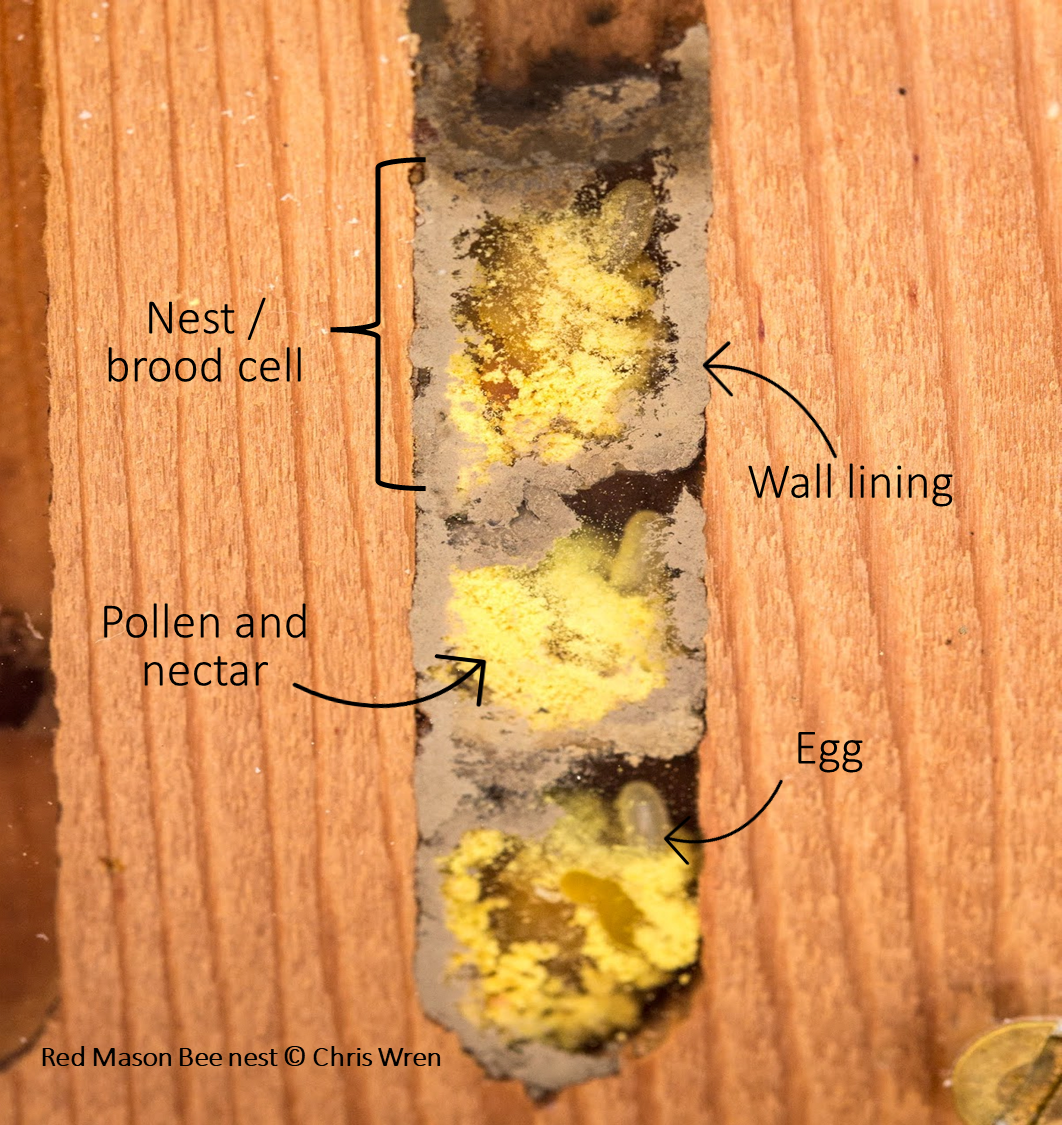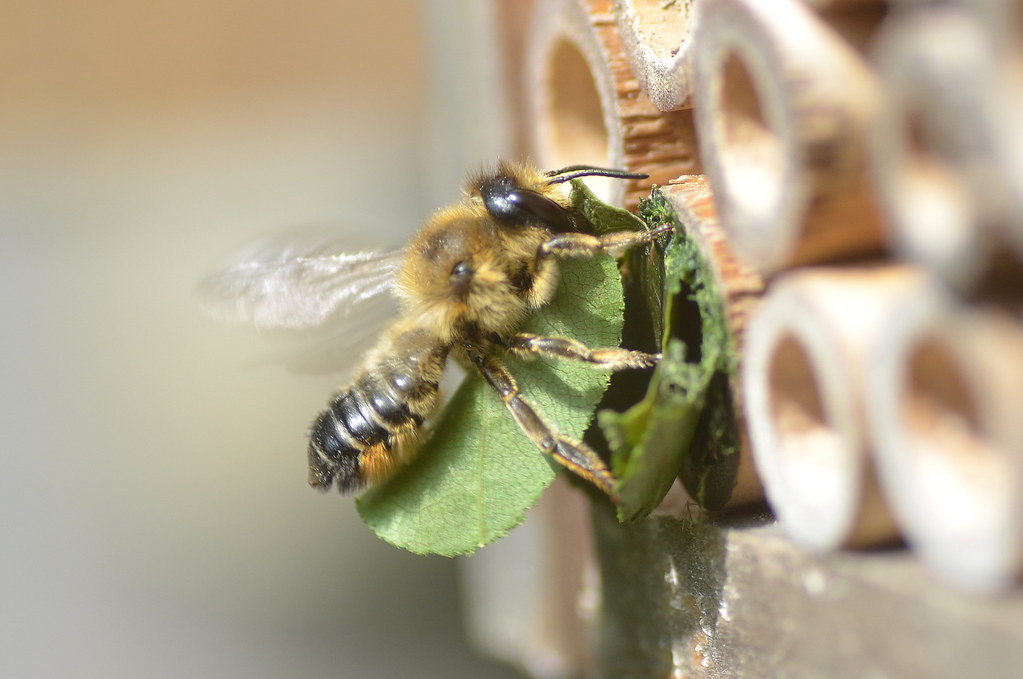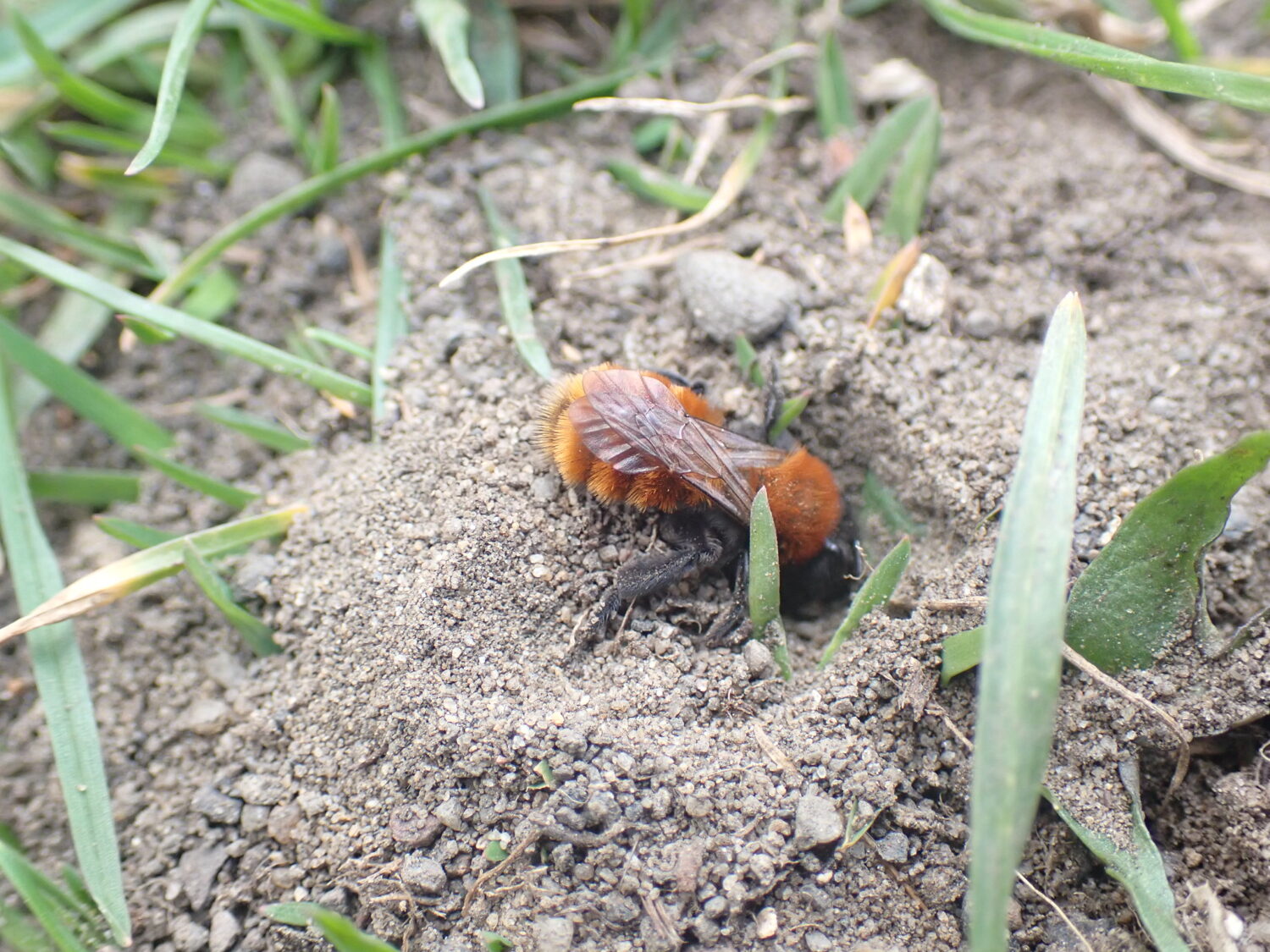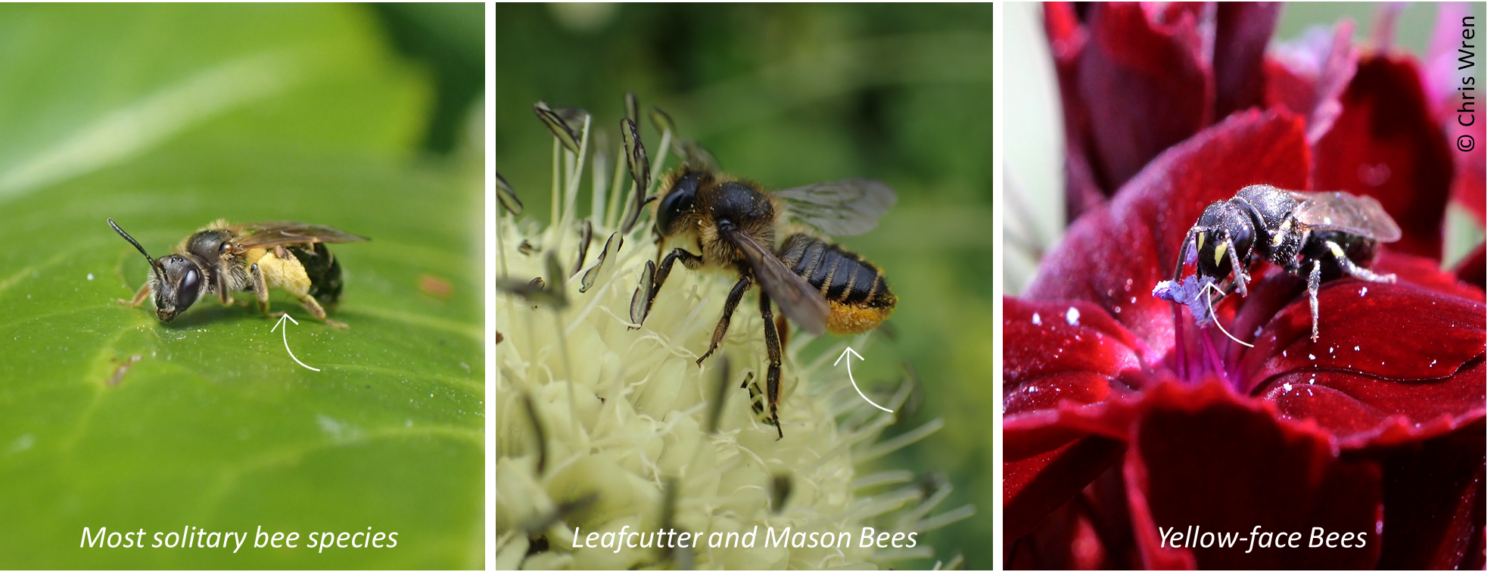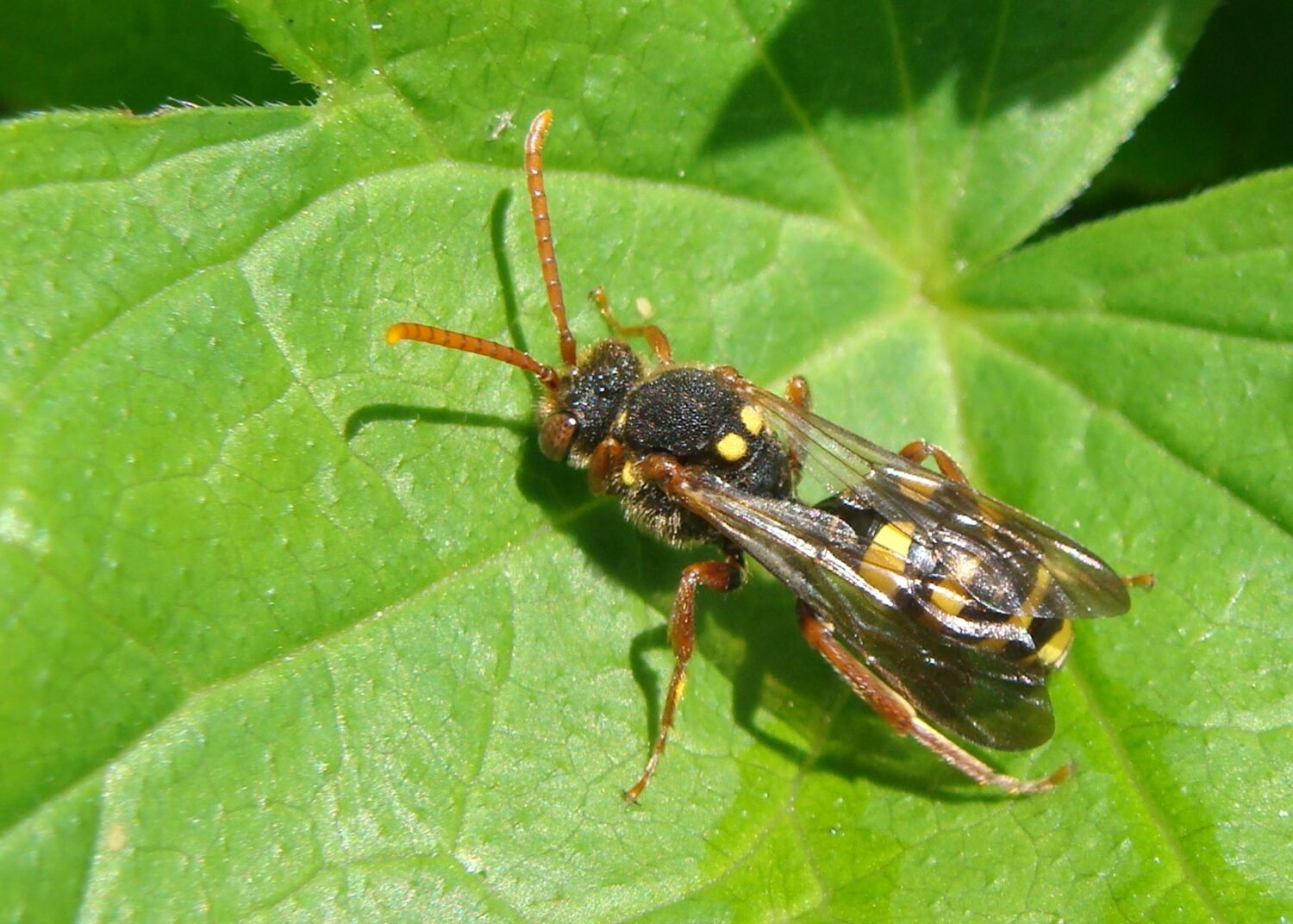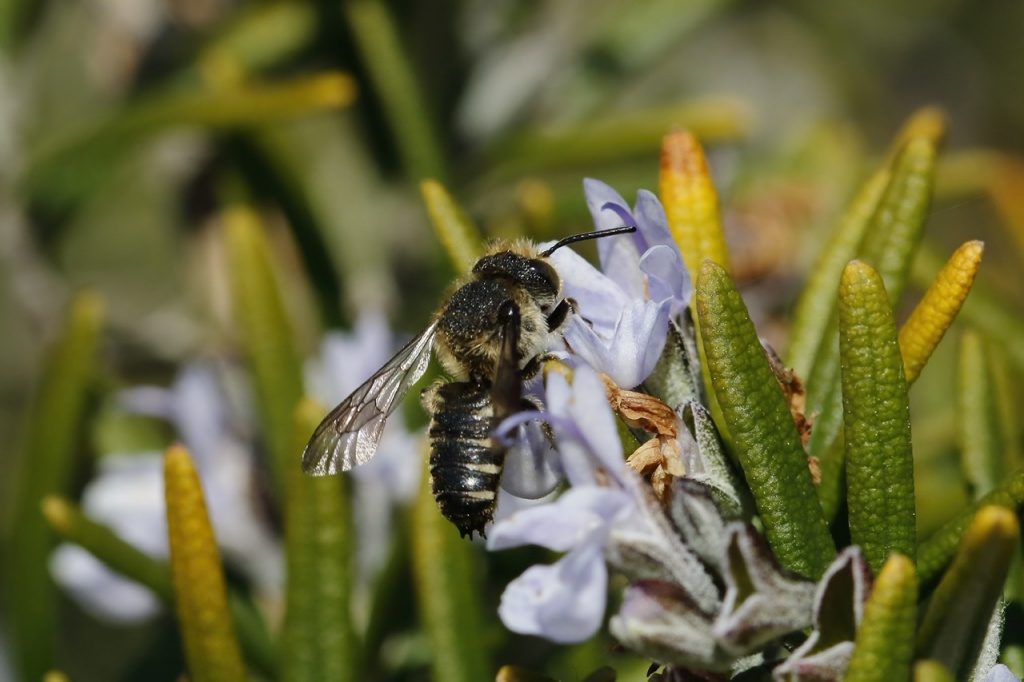Explore the fascinating world of solitary bees in a short guide by NHSN Invertebrate Section Co-coordinator, Charlotte Rankin
Often looked by their furrier and larger cousins, solitary bees in fact make up over 90% of bee species found in Britain. Over 100 bee species have been recorded from the North East: 19 bumblebees, one honeybee and the rest? Solitary bees!
Unlike honeybees and bumblebees, solitary bees do not live in colonies with ‘worker’ bees. Rather, a single female builds and provisions her own nest. Depending on the species, solitary bees can be ground or aerial nesters, and may use mud, leaves, body secretions or floral oils as their nesting material. Some are furry and larger like their bumblebee cousins while others are virtually hairless and no more than a few mm in length. A solitary bee belongs to one of 24 different groups or ‘genera’. You may have heard of mining bees, leafcutter bees and mason bees – all are solitary bees leading their own fascinating lives.
Inside a solitary bee nest
Inside a solitary bee nest is a series of egg cells, each protected by a wall of material and provisioned with nectar and pollen. Male eggs are laid towards the front of the entrance, so that they emerge before the females and are ready to mate in the following year. The female’s larvae remain within these cells until the following year and emerge as fully-formed adults, ready to mate and start the cycle again. Solitary bees are only on the wing for a matter of weeks, so it is a race against time for females to complete their nests and ensure their larvae are fully provisioned.
Nesting habits
Solitary bees may be ground nesters or aerial nesters. Ground-nesters, such as mining bees, can be found in lawns, along paths, cliff faces and on sunny banks. Using their legs, they dig into the ground to create a tunnel, which then splits into different chambers where they lay their eggs. While most species are ground-nesting, some bees nest aerially. Solitary bees such as flower bees, leafcutters and mason bees may nest in hollow plant stems, cavities in dead wood, or more artificial structures such as walls and bee hotels. While solitary, you can find females nesting close together at good sites. Some species, such as the Chocolate Mining Bee, may even share the same communal entrance.
Solitary bees are incredibly resourceful and use a range of natural materials to protect their nests from intruders such as parasites, damp and fungi. Plant materials are used in different ways. Leaf sections may be cut or chewed up, while the Wool Carder Bee collects hairs from woolly plants. The Yellow Loosestrife Bee even uses floral oil and mixes this into the nectar-pollen mixture for her larvae. Some species use abdominal secretions instead, which can be cellophane-like and most importantly, waterproof.
Collecting pollen
Only females collect pollen and males play no role in nest building or provisioning. Most solitary bees have a special pollen-collecting apparatus known as a ‘scopa’. Most collect pollen on special hairs on their hind legs. This can be quite extensive up the leg for some species. Unlike bumblebees and honeybees, solitary bees don’t tend to mix the collected pollen with nectar. This means the pollen is still dry and powdery, making them ‘messy eaters’ and so easily transfer pollen from flower to flower. Leafcutter and mason bees instead collect pollen on special hairs on their undersides. Some bees are more primitive, such as Yellow-face Bees, who instead collect pollen in their crop to later regurgitate back at their nest. Most species collect pollen from a wide variety of plants, while some species collect pollen from a small selection, or just one species.
The cuckoos
To add a twist to the tale, some solitary bees are ‘brood parasites’. Usually almost hairless and wasp-like, cuckoo bees lay their eggs inside the nests of their host species. When their eggs hatch, the larva usually kills the host grub and proceeds to feed on the food stores. While a rather mean way of life, this relationship is part and parcel of the bee world. Cuckoo bees are specialised on a certain group or species, flying at the same time and requiring the same amount of pollen. Nomad bees, for instance, parasitise the nests of mining bees. Armoured with a sharp point to their tail, sharp-tailed bees even parasitise sealed nests.
A closer look at three groups
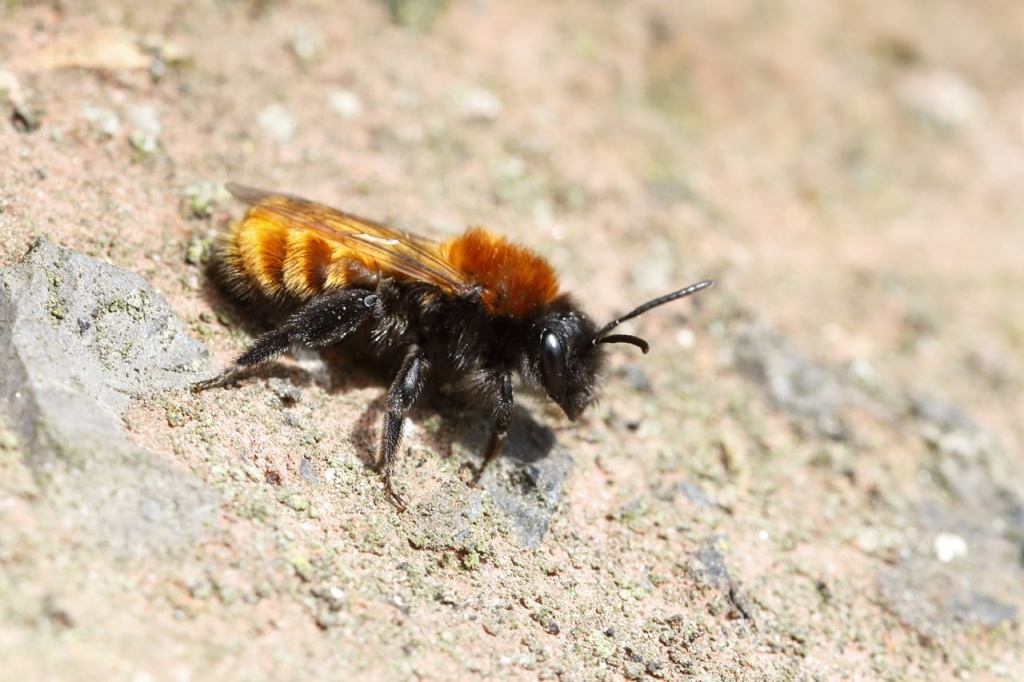
Mining bees
The largest solitary bee group, there at least 25 species of mining bee found in the North East. Typically ground-nesting, females dig into earth to create their nest burrows and collect pollen on their hind legs. Mining bees can range from 6mm (known as mini-miners) to larger, honeybee-sized females. Mining bees, such as the Tawny Mining bee, are one of the first solitary bees on the wing.
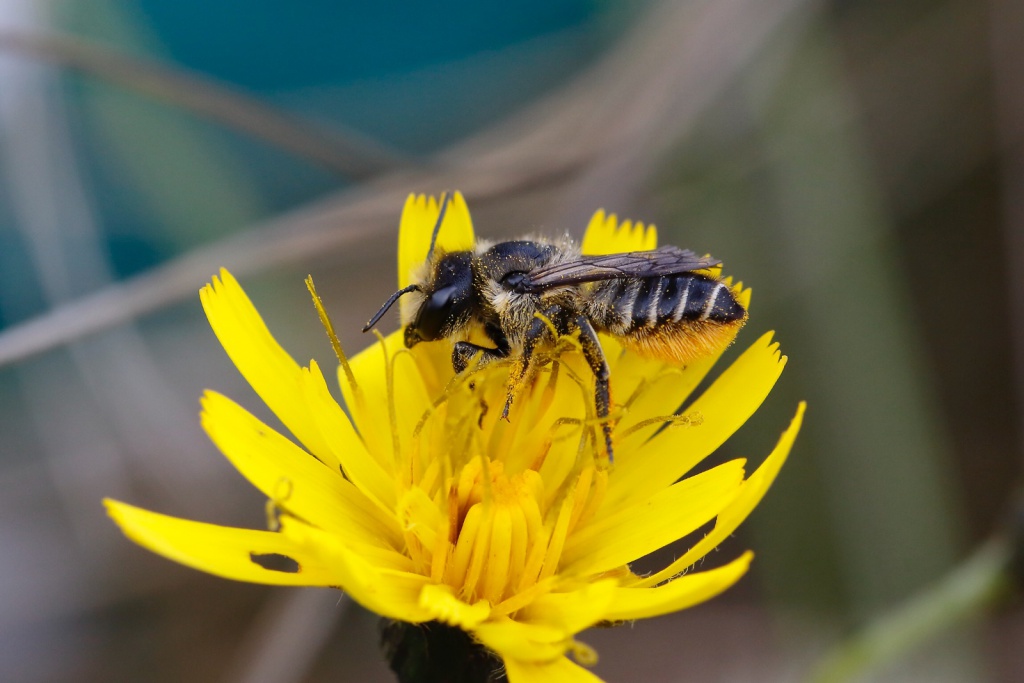
Leafcutter bees
Aerial-nesting, leafcutter bees commonly nest in bee hotels and cavities in dead wood. Equipped with large jaws, females cut sections of leaf to use as nesting material. In gardens, they have a particular preference for rose leave. Unlike most bees, females collect pollen on special hairs on their underside.
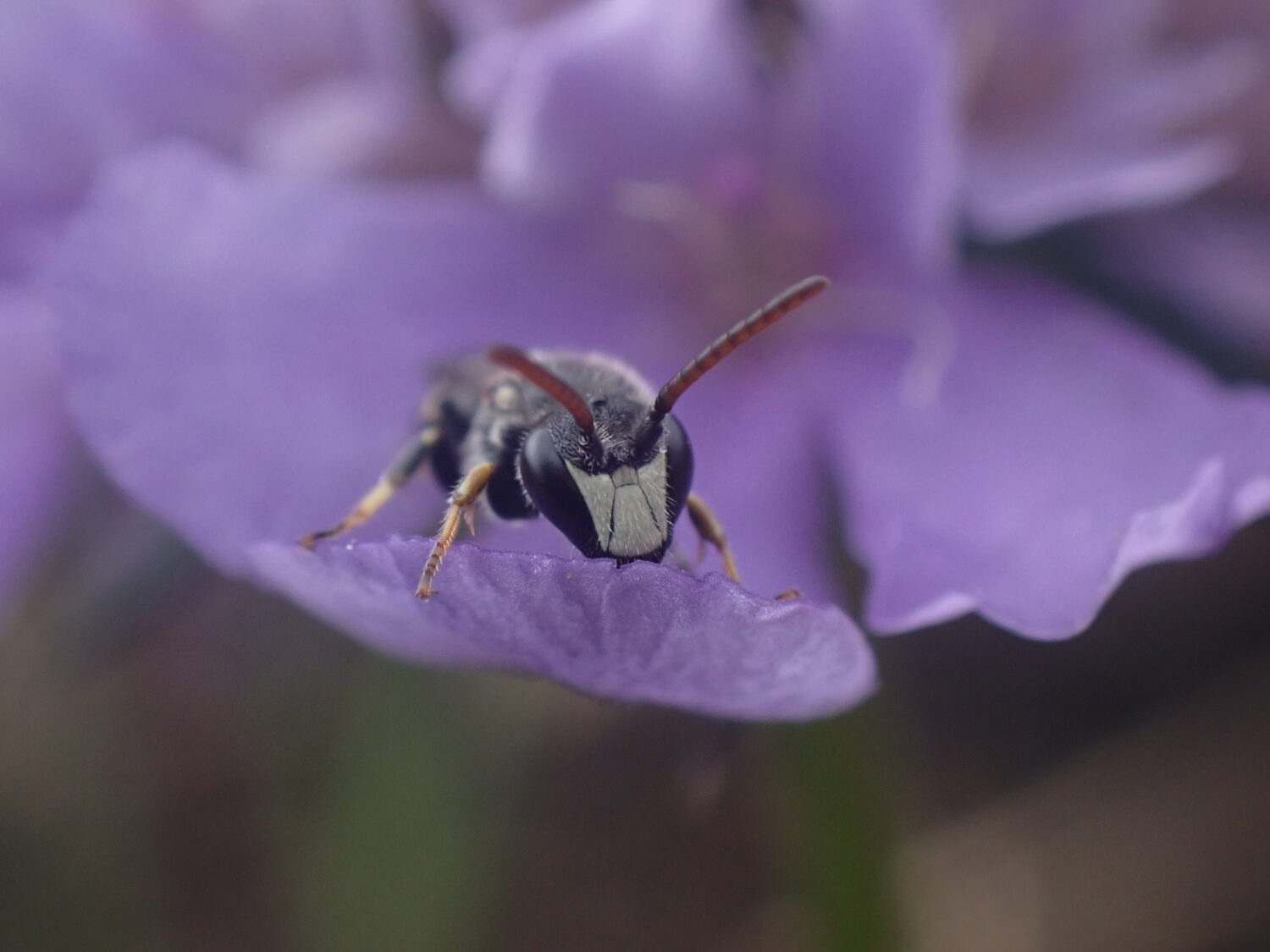
Yellow-face bees
Often mistaken as small wasps, yellow-face bees are small bees with yellow or cream faces. More primitive, females swallow pollen to later regurgitate back at the nest. Yellow-face bees nest in aerial cavities, such as walls and hollow stems, and line their nests with abdominal secretions.
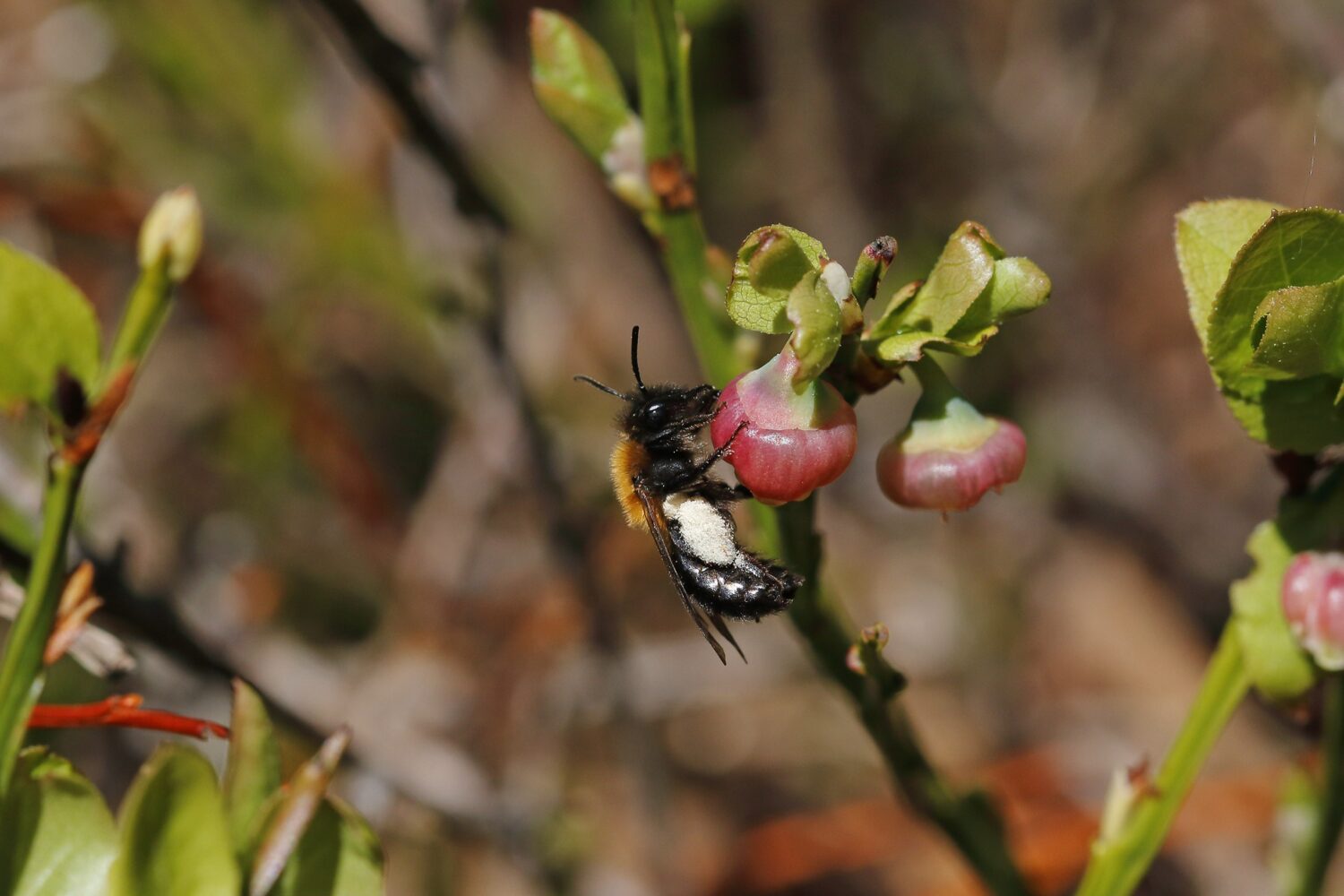
Join the North East Bee Hunt
Urban or rural, beginner or expert, we need your help to record wild bees across the North East this spring and summer.
Your records can add to our understanding of bees in the region and inform conservation and monitoring efforts.
Taking part is easy and every record counts, wherever you live in the region. Records of all bee species are encouraged.
